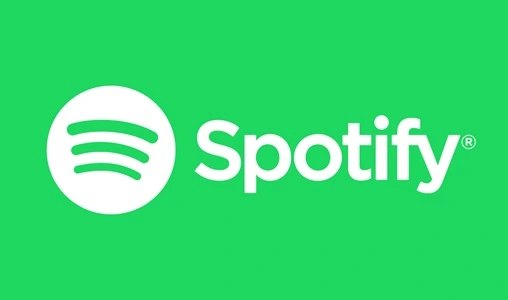Spotify began on April 23, 2006, in Sweden. Daniel Ek and Martin Lorentzon started it to solve music piracy. The name “Spotify” means “spot” and “identify.” It started on October 7, 2008, with invites in some European places. Public sign-ups began in the UK in February 2009, but they had to stop because too many people joined after a mobile app release.

Spotify Company Details
| Origin Country | Stockholm, Sweden |
| Established year | 2006 |
| CEO | Daniel Ek |
| Headquarters | Stockholm, Sweden |
| Founder | Daniel Ek |
| Brand Ambassador | Deepika Padukone |
| Products | Over 100 million tracks, 5 million podcasts titles, and 350,000 audiobooks |
| Number Of employees | 9,000+ |
| Website | https://spotify.com/ |
How Does Spotify Make Money?
Spotify earns money with free and paid services. Some things are free, but you pay for extra features. Spotify gets money from users using the free or paid service.
Advertisements: Spotify gives free music with limits and shows ads. Brands pay for these ads to reach Spotify’s big audience. The money from ads helps Spotify offer free music, covering the costs.
Premium Subscriptions: Spotify makes the most money from Premium Subscriptions while some things are free, users pay a monthly fee for full access. Those who pay are called premium subscribers—different plans with different prices, like individual, duo, family, and student options. With any plan, Premium subscribers get unlimited access to Spotify’s music and podcasts online and offline (after download).
Spotify Channels:
Spotify reaches users through two main channels:
Website: This is where most users find and use Spotify. The website has spaces for users, artists, developers, advertisers, investors, and vendors.
Mobile app: Spotify has apps for Android and iOS. There are different apps for various needs, like playing music, podcasting, artists managing their content, recording with Soundtrap Studio, and live interactions with fans through the Spotify Live app.
Spotify’s Key Partner:
Investors: Spotify raised $2.1 billion through 18 funding rounds. Since 2010, with support from 54 investors. These funds helped the company grow and enhance its services.
Music Partners: With major players like Universal, Warner, and Sony, Spotify ensures a rich content library. It also partners with independent artists, making its platform a diverse hub for music.
Marketing Partners: Spotify teamed up with big brands like Facebook, Slack, Wufoo, and Salesforce to spread the word about its services worldwide.
Ads Campaign Partners: To make advertisers happy, Spotify works with Comscore, Nielsen, and Leanlab to track and measure how well ads perform on its platform.
Spotify’s Revenue Streams:
Spotify offers a mix of free and paid services, making money from two main sources:
Premium Services: Users pay for an ad-free experience with Spotify Premium. They get unlimited access to all features as long as they’re subscribed which brings in monthly revenue for Spotify.
Ad-supported services: Users without a Premium subscription can still use Spotify for free, but they’ll see ads. Brands pay Spotify to show these ads to its users, generating revenue for the platform.
Spotify’s Customer Segments:
Spotify has customers worldwide, operating in over 180 countries. Its customer segments include:
Users: People use Spotify for music and podcasts. Some get free stuff, while others pay for all features. Users are crucial for Spotify, and advertisers target them based on demographics.
Content Creators: Musicians, record labels, and podcast creators make the stuff you hear on Spotify. They’re super important because there would be something for users to enjoy with them.
Advertisers: Companies use Spotify to show their stuff to lots of people. Advertisers pay Spotify to display their ads to users on the platform.
Spotify’s Key Resources Include:
Proprietary software platform: Spotify works on different devices with its website, mobile, and desktop apps.
Creative content and content creators: Musicians, podcast makers, those with rights, and music labels work with Spotify to share creative stuff on its platform.
Investors: People and companies who financially supported Spotify during its early stages played a crucial role in helping Spotify establish itself in the competitive market.
Human resources: Spotify’s employees are responsible for content, value delivery, and technical maintenance and updates. As of 2023, Spotify had around more than 9000+ employees globally.
On A Concluding Note:
Spotify’s freemium model fights music piracy by offering legal streaming for little or no cost, saving the industry millions. Despite the competition, Spotify stays strong. To stay ahead, it needs to explore new markets and products.

Meet Suhas Harshe, a financial advisor committed to assisting people and businesses in confidently understanding and managing the complexities of the financial world. Suhas has shared his knowledge on various topics like business, investment strategies, optimizing taxes, and promoting financial well-being through articles in InvestmentDose.com


